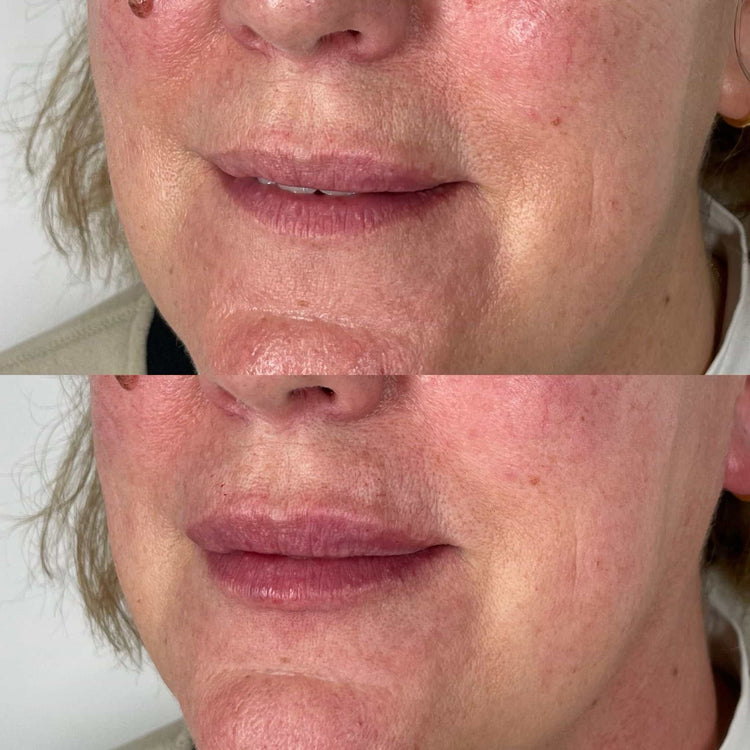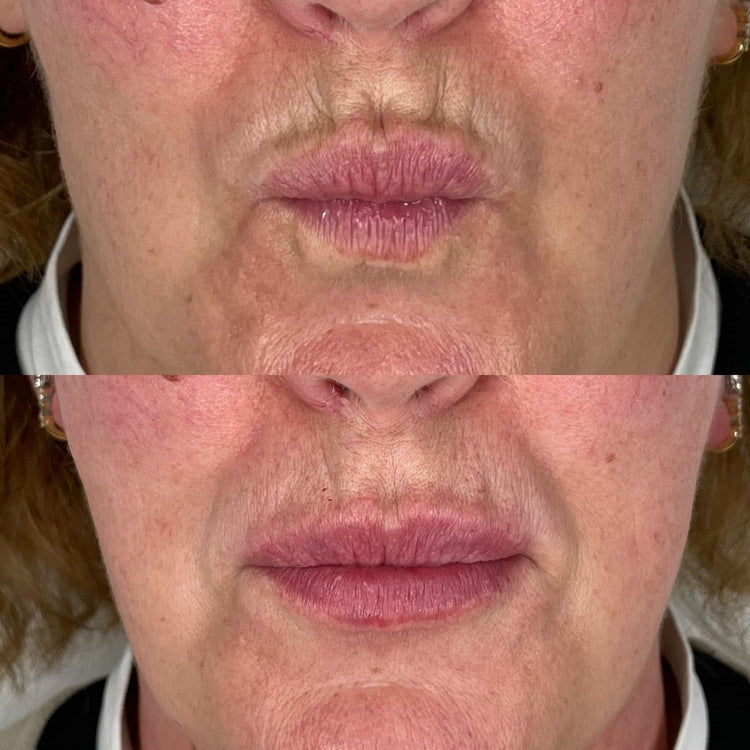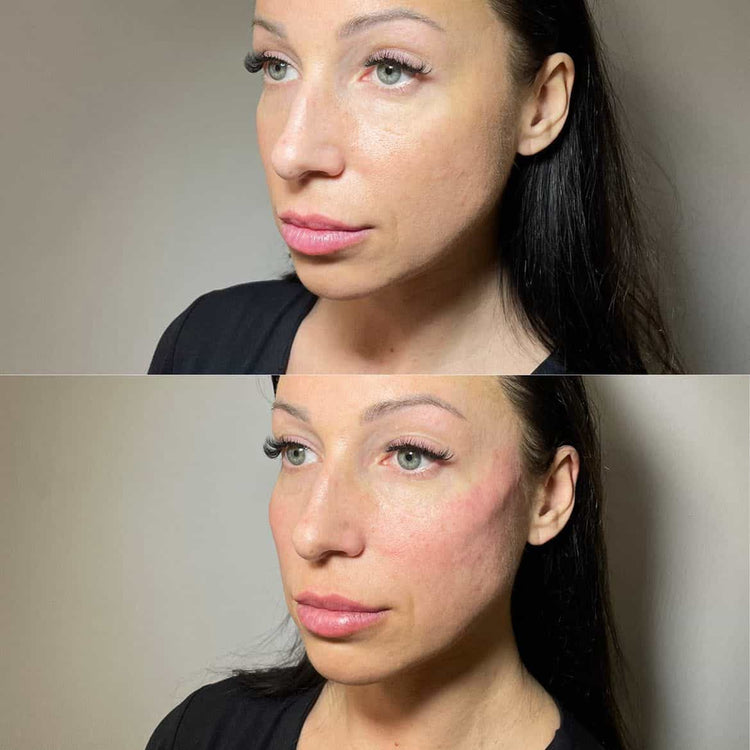What is a Non-Surgical Nose Job
A non-surgical nose job, also known as a liquid rhinoplasty, offers an alternative to traditional surgical procedures for reshaping the nose. Utilizing dermal fillers, this minimally invasive technique can subtly adjust the shape and contour of the nose without the need for incisions or downtime associated with surgery.
Definition
Dermal fillers are injectable substances, often made from hyaluronic acid, that temporarily plump up areas of the face. In a non-surgical nose job, these fillers are strategically injected into specific points on the nose to enhance its shape. Fillers can be used to elevate the bridge, define the tip, correct asymmetries, and even smooth out bumps or depressions.
Benefits
Dermal fillers are injectable substances, often made from hyaluronic acid, that temporarily plump up areas of the face. In a non-surgical nose job, these fillers are strategically injected into specific points on the nose to enhance its shape. Fillers can be used to elevate the bridge, define the tip, correct asymmetries, and even smooth out bumps or depressions.

Here are some benefits of using dermal fillers in a non-surgical nose job:
- Minimally invasive: Unlike traditional rhinoplasty, non-surgical procedures don’t require incisions or general anesthesia.
- Less downtime: Recovery is typically quicker with minimal swelling and bruising.
- Temporary results: Fillers are temporary, allowing for adjustments over time as desired.
- Reversible: If dissatisfied with the results, fillers can be dissolved.
Risks and Side Effects
While generally considered safe, non-surgical nose jobs do carry some risks and potential side effects.
Common side effects include temporary swelling, redness, bruising, tenderness, and itching at the injection sites. These usually subside within a few days to a week. More serious complications, though rare, can include infection, allergic reactions, filler migration (where the filler moves from its intended location), and vascular occlusion (blockage of blood vessels).
It’s crucial to consult with a qualified and experienced injector who understands facial anatomy and has extensive experience with dermal fillers. Thoroughly discuss your desired outcome, medical history, and any medications you are taking before undergoing the procedure.

The Process of a Dermal Filler Nose Job
A non-surgical nose job, also known as liquid rhinoplasty, presents a less invasive alternative to traditional surgical procedures for reshaping the nose. This approach leverages dermal fillers, injectable substances often composed of hyaluronic acid, which temporarily plump and reshape facial areas. In a non-surgical nose job, these fillers are precisely injected into specific points on the nose to subtly enhance its contours.
Consultation
During a consultation for a non-surgical nose job, the injector will take a detailed look at your nasal structure, discussing your goals and desired outcomes. This includes understanding what aspects of your nose you wish to change, such as the bridge height, tip shape, or nostril width.
The injector will also assess your facial anatomy, taking into account factors like skin thickness, bone structure, and cartilage placement. They will explain the process involved in a non-surgical nose job, including the type of dermal filler used, the injection technique, and potential risks and side effects.
You’ll have an opportunity to ask questions and express any concerns you may have. It’s essential to feel comfortable with the injector and confident in their expertise before proceeding with the procedure. The injector may also take photographs for reference and to monitor your progress after treatment.
Based on the consultation, the injector will determine the appropriate amount of filler needed and create a personalized treatment plan tailored to your individual needs and desired results.
Procedure
Dermal fillers are injected strategically into specific points on the nose to achieve subtle adjustments in shape and contour. Fillers can be used to elevate the bridge, define the tip, correct asymmetries, and smooth out any bumps or depressions.
During the procedure, a local anesthetic is typically applied to numb the area, ensuring patient comfort. The injector will then carefully inject the filler using ultra-fine needles. The entire process usually takes about 30 minutes to an hour.
Immediately after the procedure, you may experience some mild swelling, redness, and tenderness around the injection sites. These side effects are temporary and typically subside within a few days. You’ll be able to return to your normal activities shortly after the procedure.
The results of a non-surgical nose job using dermal fillers are typically visible immediately after the procedure. The full effect may take a few days to weeks as the filler settles into place.
The duration of the results depends on the type of filler used and individual factors such as metabolism and lifestyle. On average, non-surgical rhinoplasty results last for 6 to 18 months.
Aftercare
Aftercare following a non-surgical nose job is relatively straightforward. You should avoid applying makeup or touching the treated area for at least 24 hours to minimize the risk of infection and irritation.
It’s also important to avoid strenuous activities, including exercise and heavy lifting, for the first few days after the procedure.
Your injector will likely provide specific instructions on how to care for your nose during the healing process. It’s important to follow these instructions carefully to ensure optimal results and minimize any potential complications.
To help reduce swelling and bruising, you may be advised to apply cold compresses to the treated area for 15-20 minutes at a time, several times a day. Over-the-counter pain relievers can also be used to manage discomfort if needed.
During the healing process, it’s important to protect your nose from sun exposure and avoid using tanning beds or other sources of ultraviolet radiation. Sunscreen should always be applied liberally to the treated area to prevent any darkening or pigmentation changes.
If you experience any unusual symptoms, such as excessive swelling, persistent pain, redness, or discharge from the injection sites, contact your injector immediately.
Choosing the Right Filler for You
Choosing the right dermal filler for a non-surgical nose job is crucial for achieving desired results. Various types of fillers exist, each with unique properties and characteristics.
Types of Fillers
Hyaluronic acid (HA) based fillers are the most common type used in non-surgical rhinoplasty. They attract and retain water, providing volume and lifting effects.
HA fillers come in different densities or consistencies, allowing for precise sculpting of the nose. For example, softer HA fillers might be suitable for smoothing bumps or creating subtle contour changes, while stiffer HA fillers can be used to elevate the bridge or define the tip.
Calcium hydroxylapatite (CaHA) is another type of filler used in non-surgical rhinoplasty. It provides a more long-lasting effect than HA fillers and is known for its ability to stimulate collagen production, leading to longer-term volumization.
Poly-L-lactic acid (PLLA) is a biostimulatory filler that stimulates the body’s own collagen production. Unlike HA or CaHA fillers, PLLA doesn’t immediately add volume but gradually increases collagen over several weeks or months. This gradual volumization process results in more natural and long-lasting results.
The best type of filler for you will depend on your individual needs, desired outcome, skin type, and the injector’s expertise. It’s important to discuss your options thoroughly with a qualified injector who can help you choose the most appropriate filler for your non-surgical nose job.

Factors to Consider
When considering a non-surgical nose job, choosing the right dermal filler is crucial for achieving natural-looking and satisfying results. Several factors influence this decision:
Desired Outcome: The type of changes you desire will guide your filler choice. Subtle contour adjustments might favor softer HA fillers, while a more dramatic bridge lift might require a stiffer option.
Skin Type: Individuals with thinner skin may benefit from softer fillers that integrate seamlessly, while those with thicker skin might need denser fillers for optimal volume.
Personal Preference and Lifestyle: Some fillers offer longer-lasting results than others. Consider how long you want the effects to last and your comfort level with potential touch-up appointments.
Medical History: Certain medical conditions or allergies may influence filler suitability. Open communication with your injector about any relevant history is essential.
Remember, a thorough consultation with a qualified injector who understands facial anatomy and filler techniques is paramount. They can assess your individual needs and guide you towards the most appropriate dermal filler for your non-surgical nose job.
Long-Term Results and Maintenance
Long-term results and maintenance are important considerations when exploring a non-surgical nose job. While the effects of dermal fillers are temporary, typically lasting 6 to 18 months, they allow for flexibility and adjustments over time. Patients can revisit the injector for additional treatments or touch-ups to maintain their desired shape.
Duration of Effects
Long-term results and maintenance are important considerations when exploring a non-surgical nose job. While the effects of dermal fillers are temporary, typically lasting 6 to 18 months, they allow for flexibility and adjustments over time. Patients can revisit the injector for additional treatments or touch-ups to maintain their desired shape.
- Repeat Treatments: Dermal filler results are not permanent, so repeat treatments are typically required to maintain the desired shape.
- Touch-Ups:**
- Ongoing Assessment: It’s essential to schedule regular check-ups with your injector to monitor the filler’s longevity and discuss any desired adjustments.
Touch-up appointments may be scheduled every few months to refresh the filler and address any subtle changes in the nose’s appearance.
Repeat Treatments
Long-term results and maintenance are important considerations when exploring a non-surgical nose job. While the effects of dermal fillers are temporary, typically lasting 6 to 18 months, they allow for flexibility and adjustments over time. Patients can revisit the injector for additional treatments or touch-ups to maintain their desired shape.
Repeat treatments may be necessary to refresh the filler and address any subtle changes in the nose’s appearance. Touch-up appointments might be scheduled every few months depending on the individual and how quickly the filler breaks down.
- Repeat Treatments: Dermal filler results are not permanent, so repeat treatments are typically required to maintain the desired shape.
- Touch-Ups:**
- Ongoing Assessment: It’s essential to schedule regular check-ups with your injector to monitor the filler’s longevity and discuss any desired adjustments.
Touch-up appointments may be scheduled every few months to refresh the filler and address any subtle changes in the nose’s appearance.
Learn how dermal fillers can smooth smile lines at It’s Me & You Clinic with Dr. Laura Geige
- Juvederm Volite Skin Booster Treatments Near Ash, Surrey - May 15, 2025
- Jalupro Super Hydro Skin Booster Treatments In Kingston Upon Thames KT1 - May 14, 2025
- How Dermal Fillers Are Used In Non-Surgical Nose Jobs - May 14, 2025
